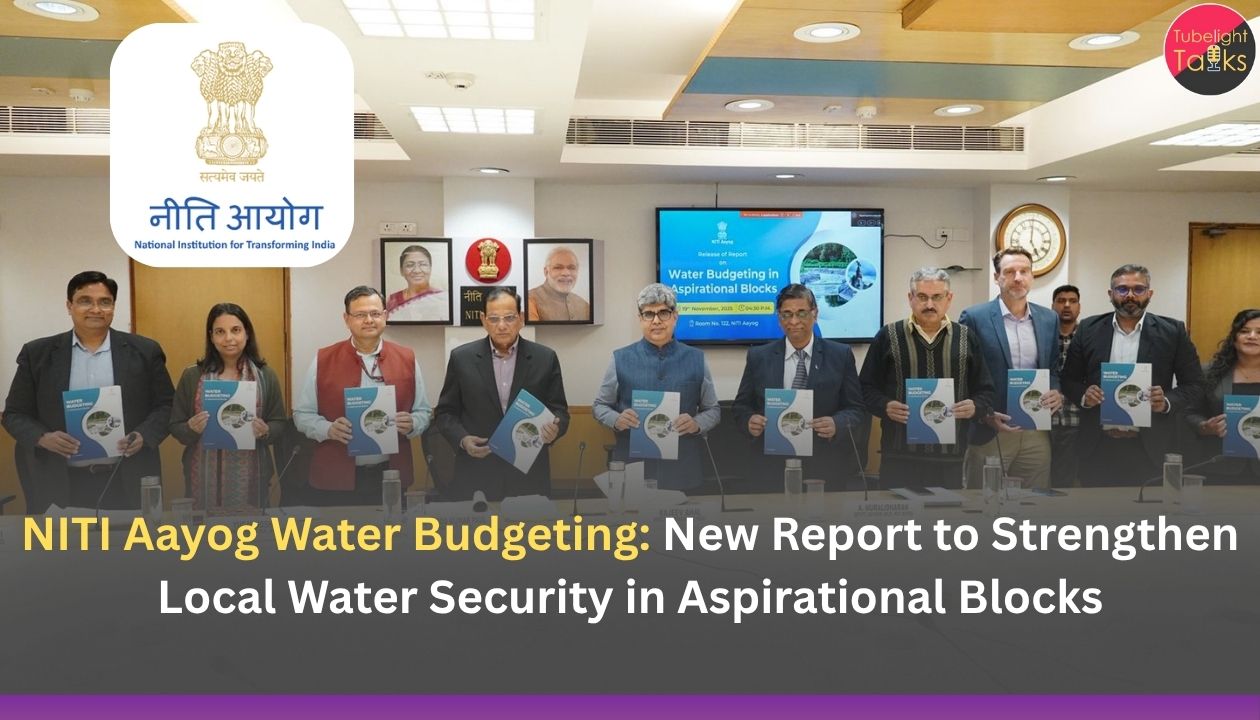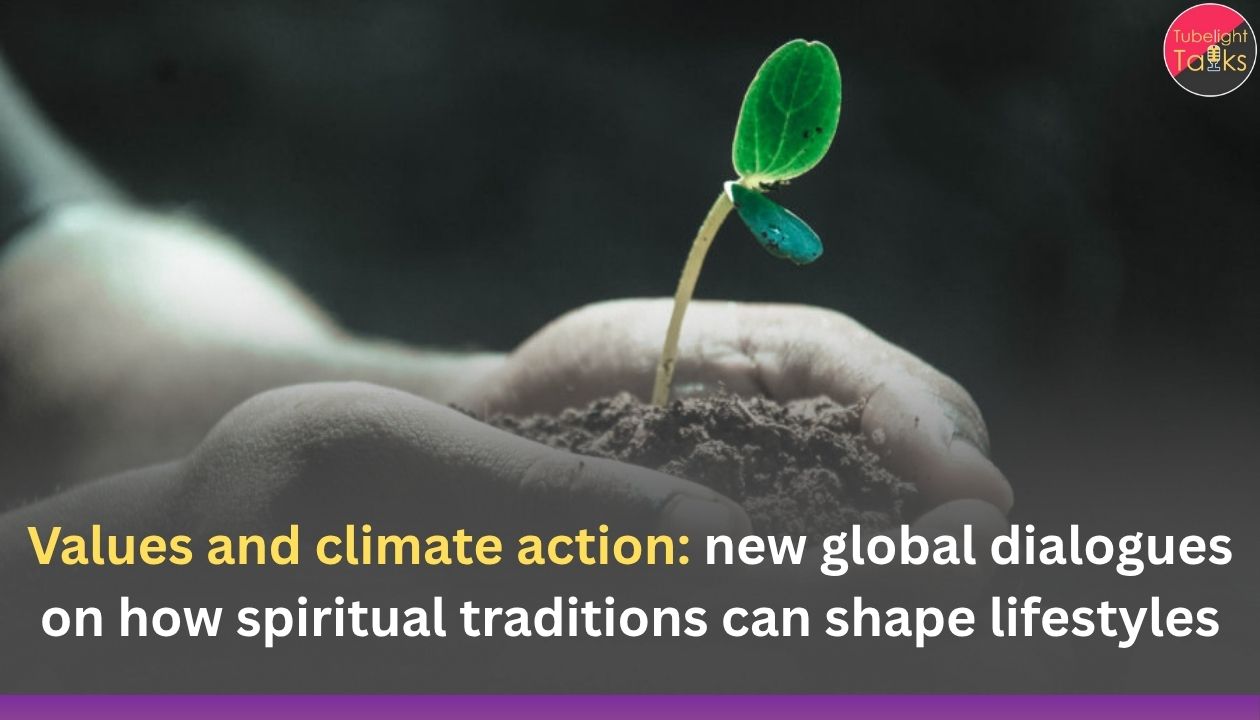NITI Aayog Water Budgeting takes center stage as the organisation releases its detailed report titled “Water Budgeting in Aspirational Blocks,” offering a structured, data-driven framework to help India’s priority regions better manage scarce water resources.
Covering 18 Aspirational Blocks across 11 States and eight agro-climatic zones, the report highlights how localized water budgeting can improve drinking water security, enhance livelihoods, and build climate resilience.
What is water budgeting?
According to NITI Aayog, water budgeting is a structured approach to:
- Estimate water demand across key sectors – domestic (human), livestock, agriculture and industry
- Map water supply from multiple sources – rainfall runoff, surface water, groundwater and inter-basin transfers
- Compare demand and supply to identify gaps, stress points and surplus pockets
This diagnostic view at block level is intended to shift administrations from reactive crisis-management to proactive, planned water governance.
Varuni: the web-based platform powering the exercise
The water budgeting exercise is anchored in Varuni, a web-based platform that aggregates field data and secondary datasets to generate block-level water budgets.
Key functions of Varuni include:
- Integrating hydrological, climatic and usage data
- Generating sector-wise demand–supply balance sheets
- Flagging hotspots of over-extraction or vulnerability
- Supporting scenario planning for different rainfall or crop patterns
By using Varuni, local officials can visualise water availability, explore interventions (such as demand management, recharge, storage or crop diversification) and monitor progress over time.
Focus on Aspirational Blocks
The 18 blocks covered in the study belong to the Aspirational Blocks Programme (ABP) under NITI Aayog, which extends the logic of the Aspirational Districts Programme to harder-to-reach blocks with multidimensional development gaps.
These blocks:
- Represent diverse hydro-geological and climatic conditions
- Face varying degrees of water scarcity, seasonal stress or quality issues
- Depend heavily on water for agriculture-based livelihoods
The report underlines that “one-size-fits-all” approaches do not work; each block requires customised strategies in line with its water endowments and socio-economic context.
Key findings and recommendations
The report highlights several cross-cutting insights:
- High pressure on groundwater: Many blocks rely disproportionately on groundwater for irrigation and drinking water, leading to falling water tables and quality concerns.
- Seasonal stress patterns: Even blocks with overall adequate annual rainfall experience acute summer shortages, pointing to storage, recharge and distribution issues rather than absolute scarcity.
- Agriculture as dominant user: Agriculture consumes the bulk of water, making crop choice, irrigation efficiency and on-farm water management central to long-term security.
- Data gaps and fragmentation: Local data on wells, minor irrigation structures, drinking water schemes and water quality is often scattered across departments.
Based on the water budgets, the report offers block-specific recommendations, such as:
- Promoting micro-irrigation and water-saving agronomic practices
- Crop planning and diversification in line with local water balances
- Protection and revival of traditional water bodies and recharge structures
- Strengthening drinking water source sustainability plans, particularly for rural households
- Encouraging community-based monitoring and participation in water governance
These recommendations are accompanied by “key takeaways for drinking water sustainability” for each block, to be integrated into local planning and convergence with existing schemes.
Linking water budgeting with Viksit Bharat@2047
The report situates local water budgeting within the Prime Minister’s vision of Viksit Bharat@2047, emphasising that sustainable and equitable water security is foundational for health, livelihoods and economic development.
NITI Aayog notes that as policies increasingly move towards:
- Convergent water resources management,
- Digital governance, and
- Outcome-based planning,
tools like Varuni-based water budgeting can become a cornerstone of India’s transition to climate resilience and sustainable development.
Partnerships and next steps
The report has been prepared in collaboration with GIZ India, drawing on field-level assessments and data inputs from multiple institutions. The launch event in New Delhi was attended by representatives from Central Ministries, the National Institute of Hydrology, Centre for Water Resources Development and Management (CWRDM), Government of Kerala, and other technical partners.
NITI Aayog has indicated that the next phase will focus on:
- Scaling water budgeting beyond the initial 18 blocks
- Strengthening community engagement in planning and implementation
- Using the diagnostic insights to design measurable interventions that improve water availability, public health and livelihoods.
Where to access the report
The full report “Water Budgeting in Aspirational Blocks” and related resources are available on:
- NITI Aayog website: niti.gov.in
- PIB Press Release: Water Budgeting in Aspiration Blocks to enhance local water security
Also Read: Decline in Global Water Storage and Its Agricultural Implications
FAQs: NITI Aayog Water Budgeting
Q1. What does “water budgeting” mean in this report?
Water budgeting is a structured approach to estimate how much water is available in a block (from rainfall, surface water and groundwater) and how much is needed for households, livestock, agriculture and other uses. Comparing demand and supply highlights gaps, surplus and stress areas so that better planning can be done.
Q2. What are “Aspirational Blocks”?
Aspirational Blocks are development-priority blocks identified under NITI Aayog’s Aspirational Blocks Programme. They face multiple socio-economic and infrastructural challenges and need targeted interventions, including for basic services like water.
Q3. How many areas were covered in the water budgeting exercise?
The report covers 18 Aspirational Blocks across 11 States, representing diverse hydro-geological and agro-climatic conditions. This helps test the framework in different real-world situations.
Q4. What is the Varuni platform and how is it used?
Varuni is a web-based decision-support platform that integrates data on rainfall, water bodies, groundwater, land use and sector-wise demand. It generates block-level water budgets, shows demand–supply gaps and helps officials simulate different scenarios and plan interventions.
Q5. How will this report help improve drinking water security?
The water budgets and analysis are used to prepare block-specific recommendations on source sustainability, recharge, storage, distribution and demand management. These inputs can be integrated into local plans and schemes to ensure year-round, safe drinking water for rural households.
Q6. Who prepared the report and where can it be accessed?
The report has been released by NITI Aayog, with technical support from partner institutions. It can be accessed on the NITI Aayog website and through the related Press Information Bureau (PIB) press release.










